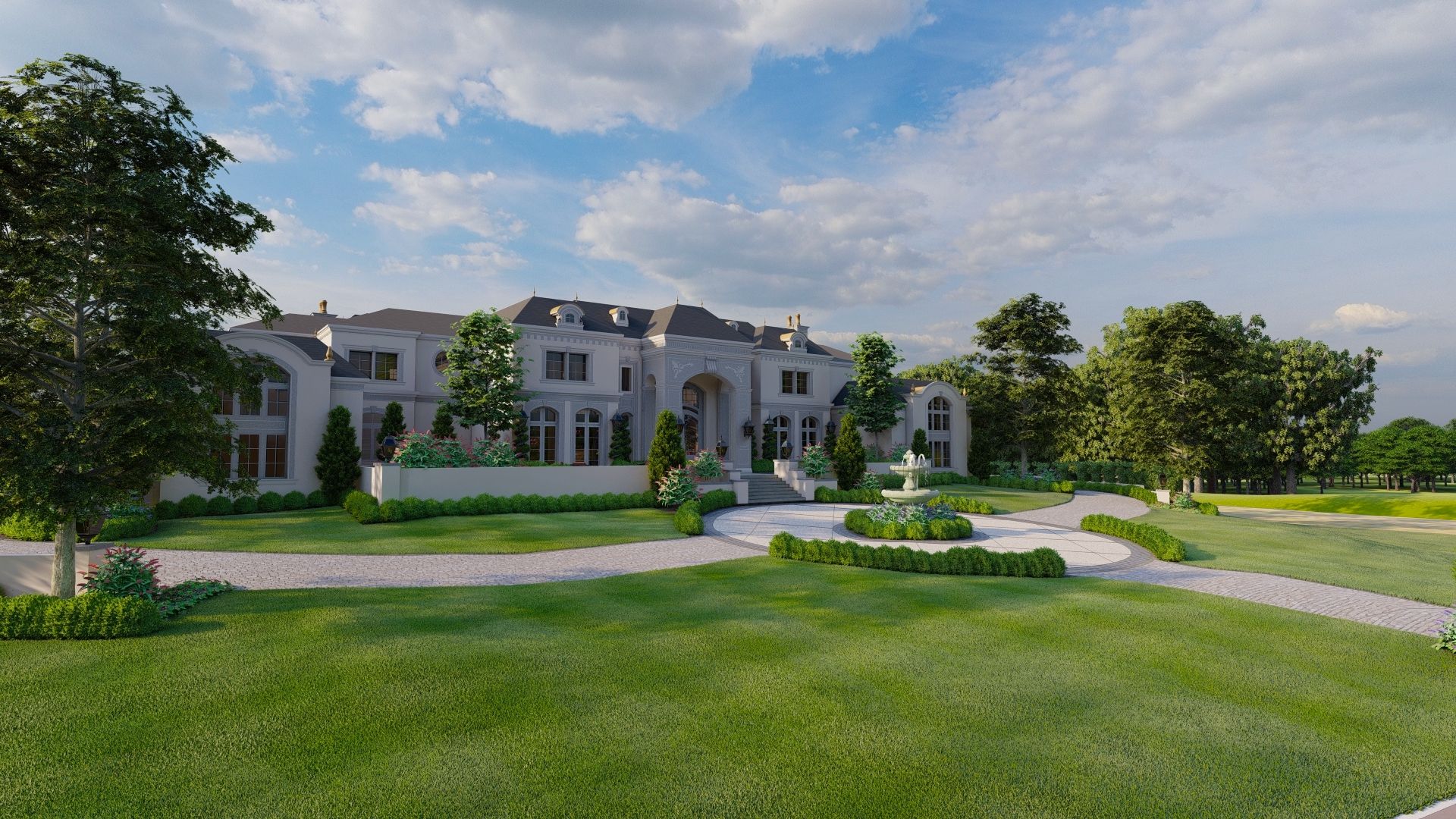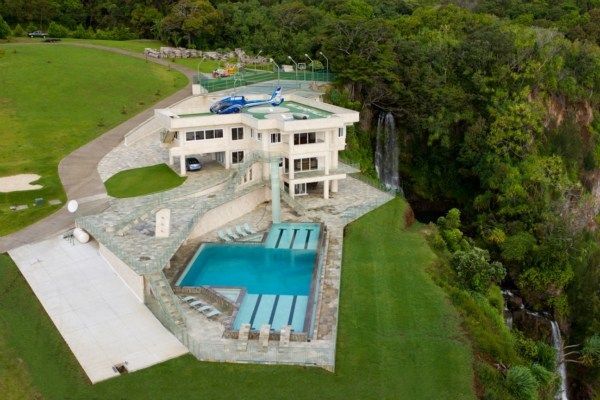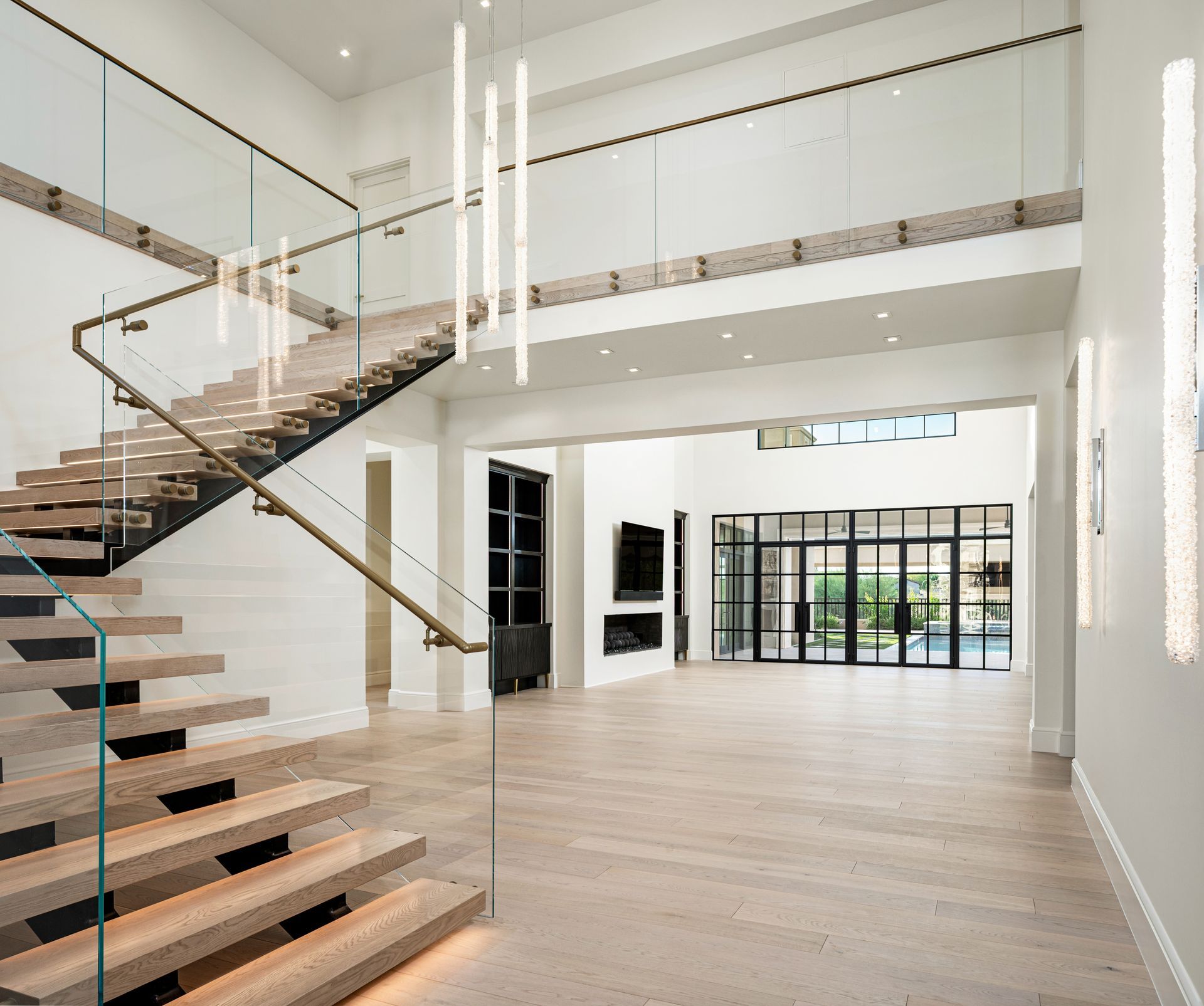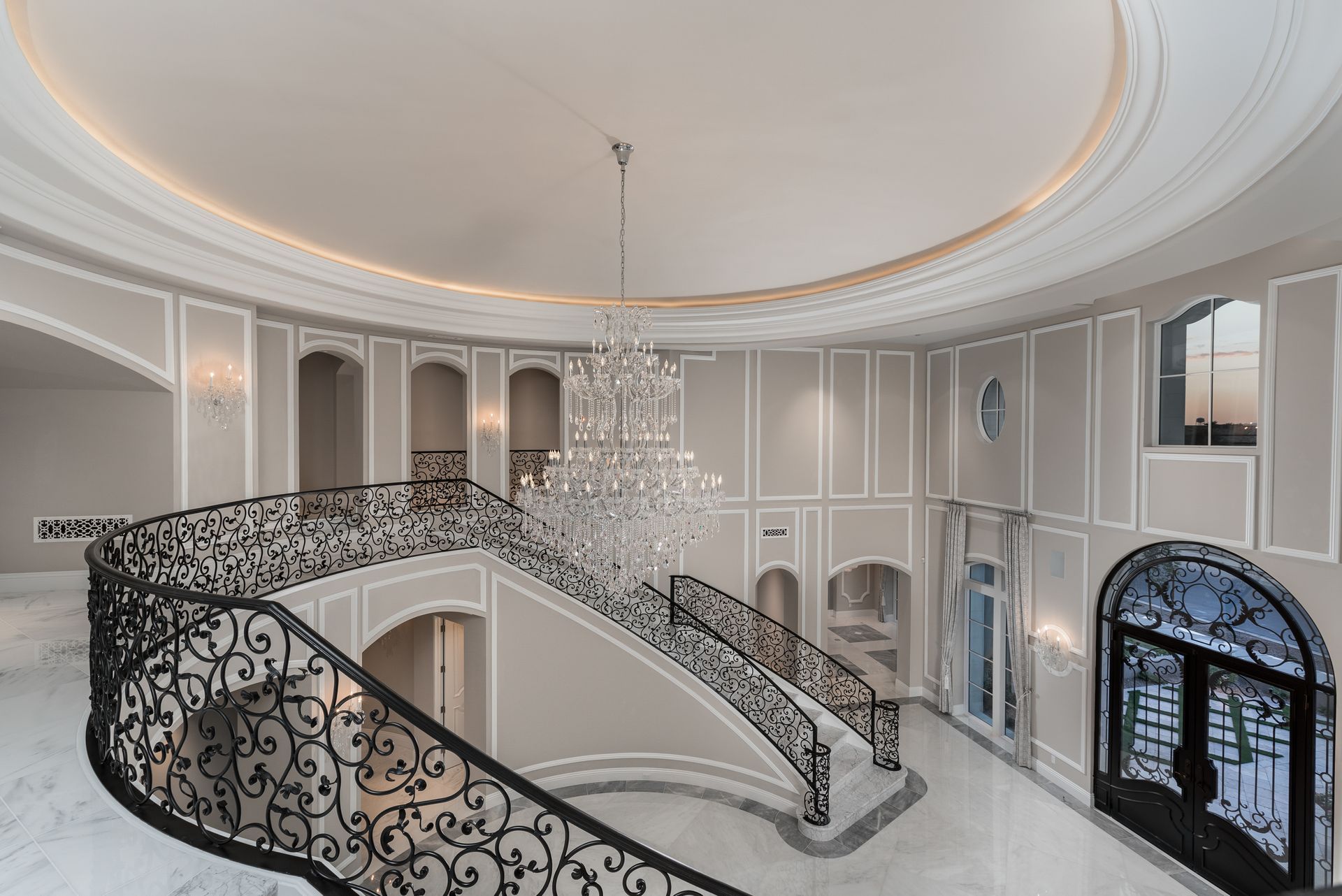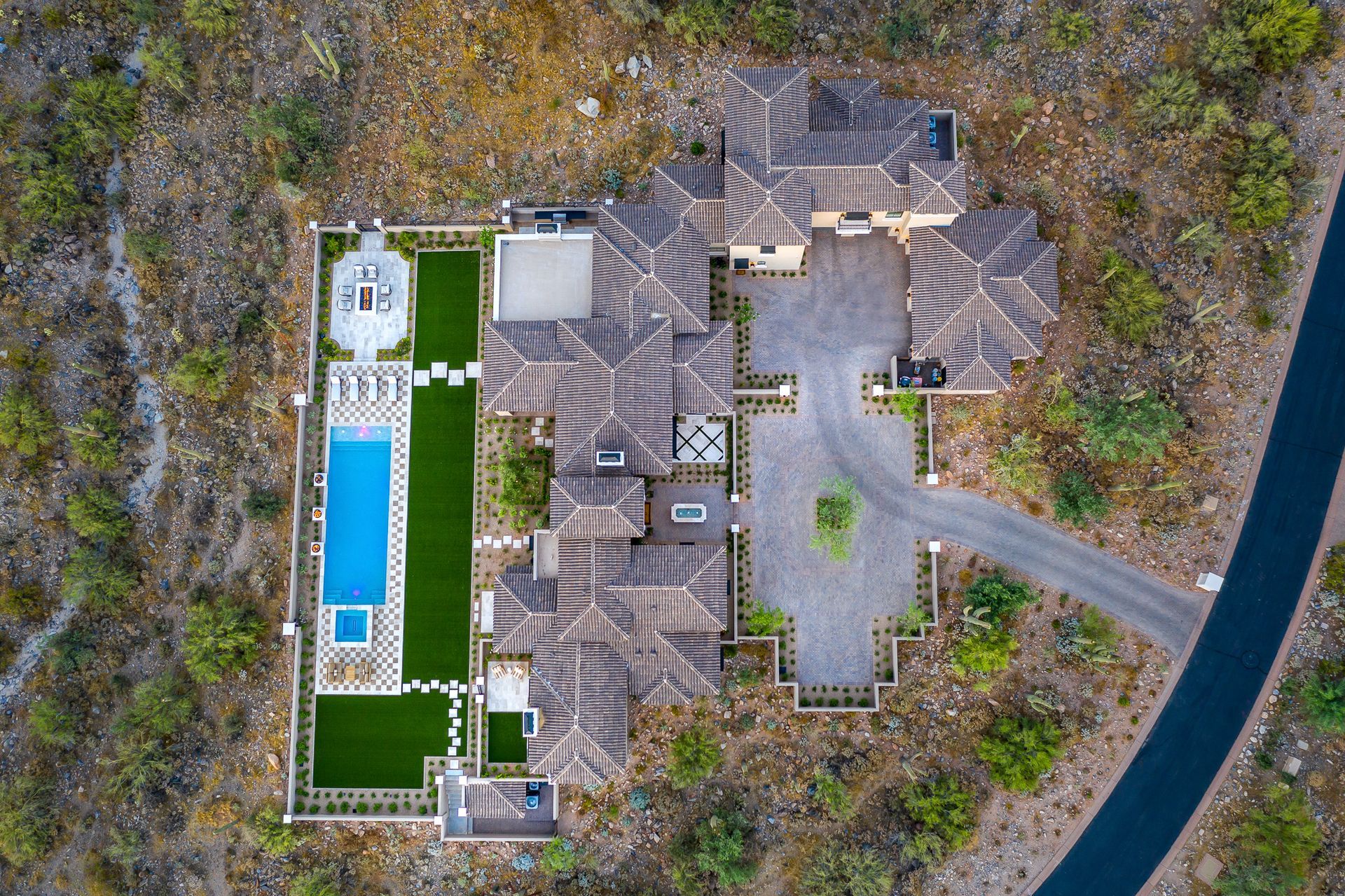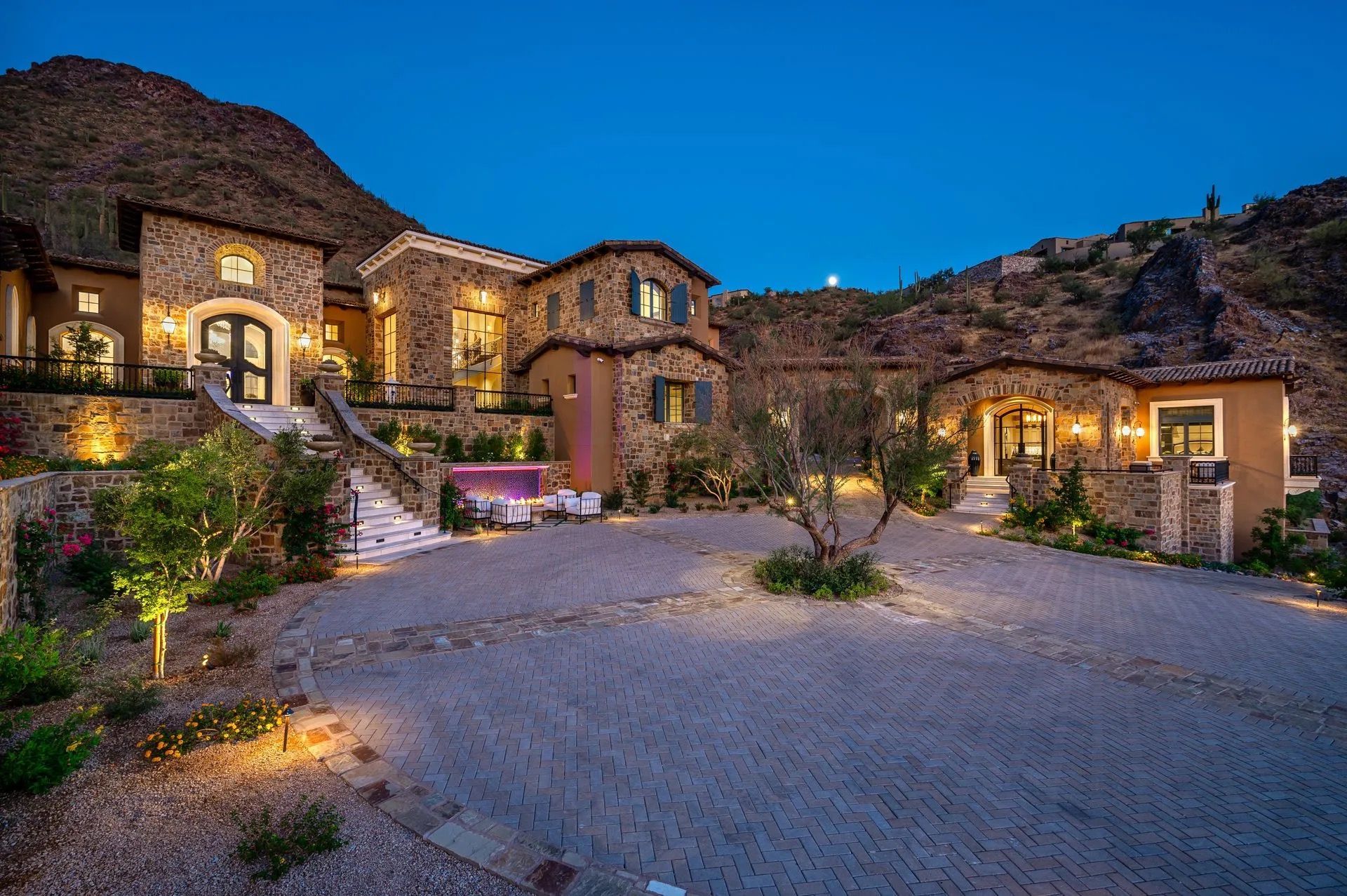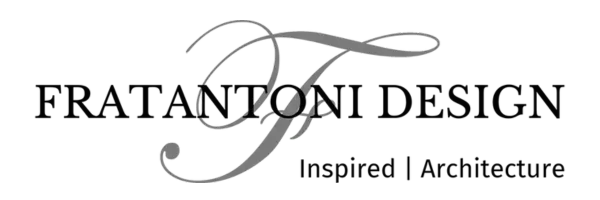Concrete Pools
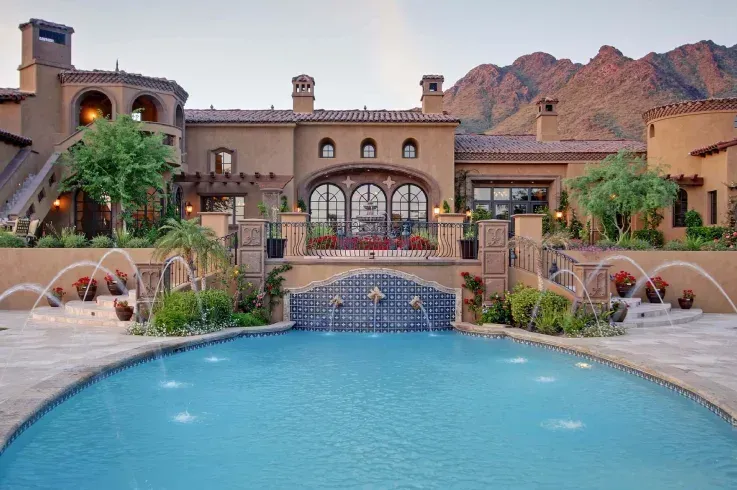
Concrete Pools are commonly referred to as gunite or shotcrete pools. The difference between the two is how the concrete is mixed and applied to the pool. There are almost no limitations with a concrete pool. They are thought of as the higher end type pools. They have an interior finish that can be a white plaster or marcite, or a colored plaster. They can have pebble finishes, quartz finishes, all the way up to smooth glass bead finishes. This creates a very unique looking product. Concrete pools may come with porcelain, ceramic, or glass tile bands around the entire pool. They are also unique in that they can be constructed with negative edges, perimeter overflows, as well as benches and bars built right into them.
THEY ARE CONSTRUCTED HOW…
So how are concrete pools constructed? First, a hole is precisely excavated, all plumbing work is installed, and then a complete interlocking cage of rebar is erected. After rebar reinforcement is in place, the concrete is applied, set,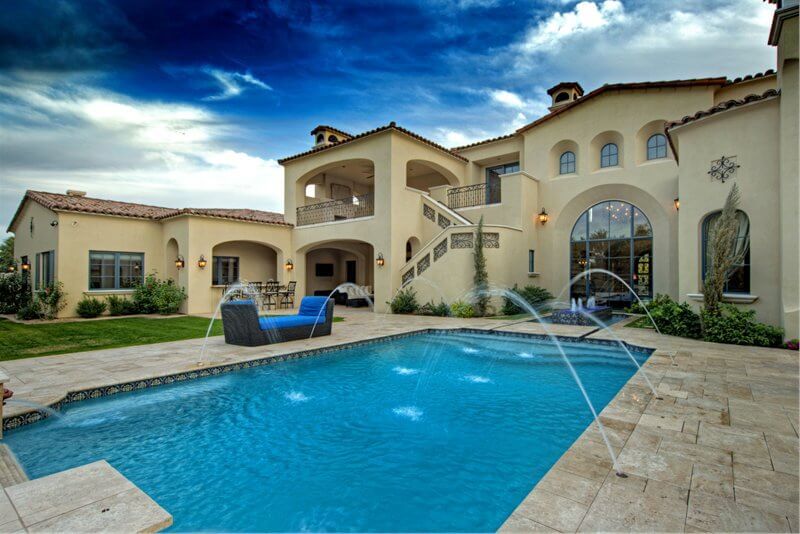 and left in place a minimum of twenty eight to thirty days for curing. During the course of this period the coping and surrounding deck are completed. Then the interior tile work is set into place. Finally after the concrete has cured, the interior finish is applied. At this time the pool is immediately filled with water and filtration system started. Concrete pools, tend to be the strongest of all the inground swimming pools. Since they are rebar and concrete they can’t oxidize or corrode. Like every other form of concrete, they get stronger as time passes. They are at the upper echelon of price points and have a higher end product reputation.
and left in place a minimum of twenty eight to thirty days for curing. During the course of this period the coping and surrounding deck are completed. Then the interior tile work is set into place. Finally after the concrete has cured, the interior finish is applied. At this time the pool is immediately filled with water and filtration system started. Concrete pools, tend to be the strongest of all the inground swimming pools. Since they are rebar and concrete they can’t oxidize or corrode. Like every other form of concrete, they get stronger as time passes. They are at the upper echelon of price points and have a higher end product reputation.
Advantages:
- As big as you want: Concrete pools can be any size, shape, or depth.
- More flexibility with design features: Vanishing edges, beach entries, tanning ledges, etc. are all just a sketch away from reality with concrete pools.
- Works of art: Concrete Pools can be integrated into design as a literal work of art in the landscape.
Disadvantages:
- High lifetime cost: Concrete pools will need to be renovated every 10-20 years. This involves resurfacing and re-tiling the pool at an expense of $8k-$15k or much higher depending on the pool.
- More chemical use: Because the surface of concrete pools is very porous, more chemicals and filtration are required to prevent algae. The alkaline pH of the pool shell also constantly raises the pH of the water, requiring the frequent adding of acid to counteract the effect.
- More maintenance: Concrete pools also need to be frequently broomed or swept with a pool brush to remove algae from the pours of the plaster or aggregate surface.
- Longer install time: Concrete pools take longer to install….usually 2-4 months.
Information Provided by: Seasonal World
The post Concrete Pools appeared first on Fratantoni Design.

